
****JavaScript based drop down DHTML menu generated by NavStudio. (OpenCube Inc. - http://www.opencube.com)****
|

****JavaScript based drop down DHTML menu generated by NavStudio. (OpenCube Inc. - http://www.opencube.com)****
|

****JavaScript based drop down DHTML menu generated by NavStudio. (OpenCube Inc. - http://www.opencube.com)****
|
|
|
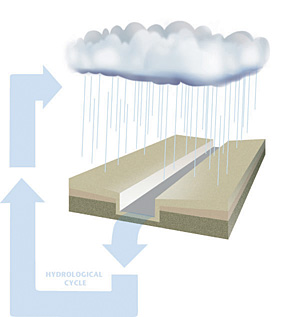 |
Scenario:
Rainwater falls over an area and runs towards, and collects at, any low point.
Conclusion:
Grated trench drains intercept and collect surface liquid. It is then carried to a point were it can discharge into an underground pipe system or culvert. |
Modeling Surface Drainage Flow
There are two methods used to try and size grated trench drain to account for all surface water collected - we also have to account for any discharge into the grated trench drain such as downpipes, etc.
Non-uniform flow (Spatially Varied Flow)
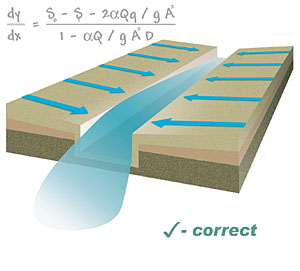 |
Non-uniform flow accounts for liquid being carried in a trench plus the constant addition of liquid collected through the grates along the trench run - lateral intake.
A characteristic of non-uniform flow is that liquid velocity and height, change at successive cross sections along the trench.
To correctly model this situation, differential calculus is required; usually computer modeling is used.
As a result of empirical testing, ACO has developed a computer program, ‘Hydro’, to model trench hydraulics.
ACO provides a complimentary service for trench hydraulics. Click here for details. |
Steady, uniform flow (Manning’s Theory)
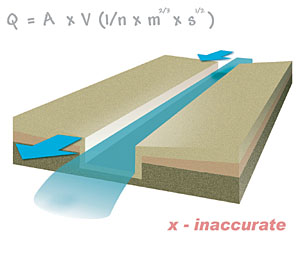 |
A traditionally used method of calculating trench hydraulics involves the use of equations for steady uniform flow.
This approach is better suited for pipe design where liquid velocity and height remain constant along the pipe.
No allowance is made for lateral intake.
Steady, uniform flow can be used in culvert (open top) design for spillways or irrigation trenches. These culverts are used to carry liquids from one area to another and do not account for lateral intake of liquids. |
Other factors affecting trench run hydraulics
Ground fall or slope
 |
Slope increases the velocity of liquid within the trench drain and therefore improves hydraulic
efficiency. Slope can be introduced by:
- Existing pavement with natural fall.
- Introduce a stepped configuration.
- Introduce slope along the base of the
trench run.
- Combination.
|
|
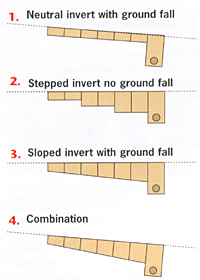 |
Effect of slope on trench hydraulic performance
Non-uniform flow
Accurately accounts for effect of slope and run length. Models the accurate hydraulic performance of trench. Allows correct size of trench drain to be used.

Slope is part of the equation - but not as a multiplier. Trench size is accurately calculated.

Slope is part of the equation - but not as a multiplier. Trench size is accurately calculated.

Slope is part of the equation - but not as a multiplier. Trench size is accurately calculated. |
|
Steady Uniform flow
Uses Area x Velocity to estimate flow capacity. When there is little or minimal slope, velocity tends towards zero, and water depths are over-estimated.
When there is significant slope, steady uniform flow under-estimates the water depths in the trench drain.
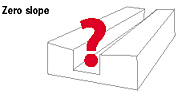 |
Slope 'S' is a multiplier in the equation
(Q=(1/n) AR2/3 x S1/2). For flat gradients slope is zero and water depths cannot be calculated, therefore trench cannot be sized. |
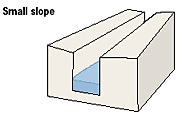 |
When slope is small, water depths are over-estimated - resulting in a larger, more costly trench. |
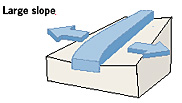 |
When slope is large, water depth are under-estimated. Trench size is under sized - resulting in flooding. |
|
|
|
|